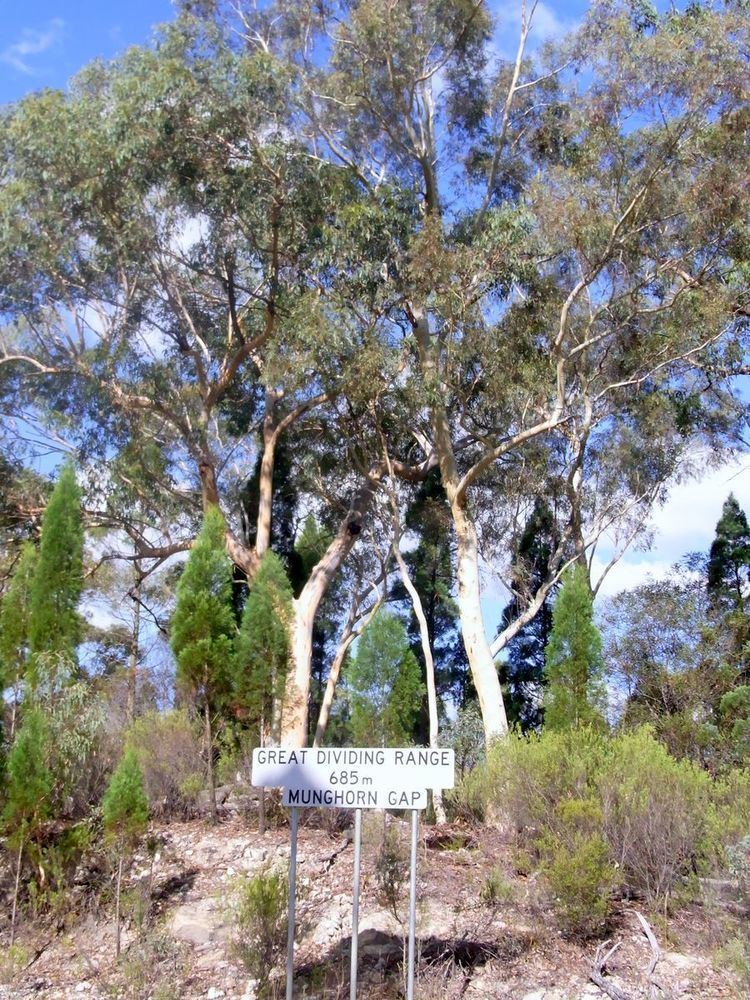Area 59.34 km² | Established April 1961 (1961-04) | |
 | ||
Managing authorities Website Munghorn Gap Nature Reserve See also Protected areas ofNew South Wales Management National Parks and Wildlife Service Similar Goulburn River National, Bird Island Nature Reserve, Gumbaynggirr State Conserva, Yatteyattah Nature Reserve, Mount Yarrowyck Nature R | ||
The Munghorn Gap Nature Reserve is a protected nature reserve that is located in the Central Tablelands region of New South Wales, in eastern Australia. The 5,934-hectare (14,660-acre) reserve is situated on the Great Dividing Range, 35 kilometres (22 mi) north-east of Mudgee. The Castle Rocks walking trail reveals pagoda-like sandstone formations.
Contents
Flora and fauna
Many plants and animals are at their eastern or westernmost points of natural distribution. The reserve is situated at one of the lowest points of the Great Divide. The streams forming from the east reach the Hunter River, and those from the west eventually flow to the Darling River.
The flora of the area is an interesting combination of the moist mountain plants and those of the drier western plains. Vegetation is mostly dominated by Eucalyptus and Callitris pine.
The reserve is particularly noted for the high bird diversity. It lies within the Mudgee-Wollar Important Bird Area, so identified by BirdLife International because of its importance for the endangered regent honeyeater.
Typical mountain or eastern forest birds such as the superb lyrebird and satin bowerbird are present, as are emus and cockatiels, more usually seen west of the dividing range. Some 164 species of birds have been recorded. Facilities are present for birdwatchers.
History
The western Wiradjuri people traveled through the area, trading with other indigenous Australians east of the divide. Europeans in the 19th century were present. They traveled across the range, on horse and bullock teams. There is also evidence of peat and coal mining, collection of wood, quarrying, prospecting and blacksmithing.
